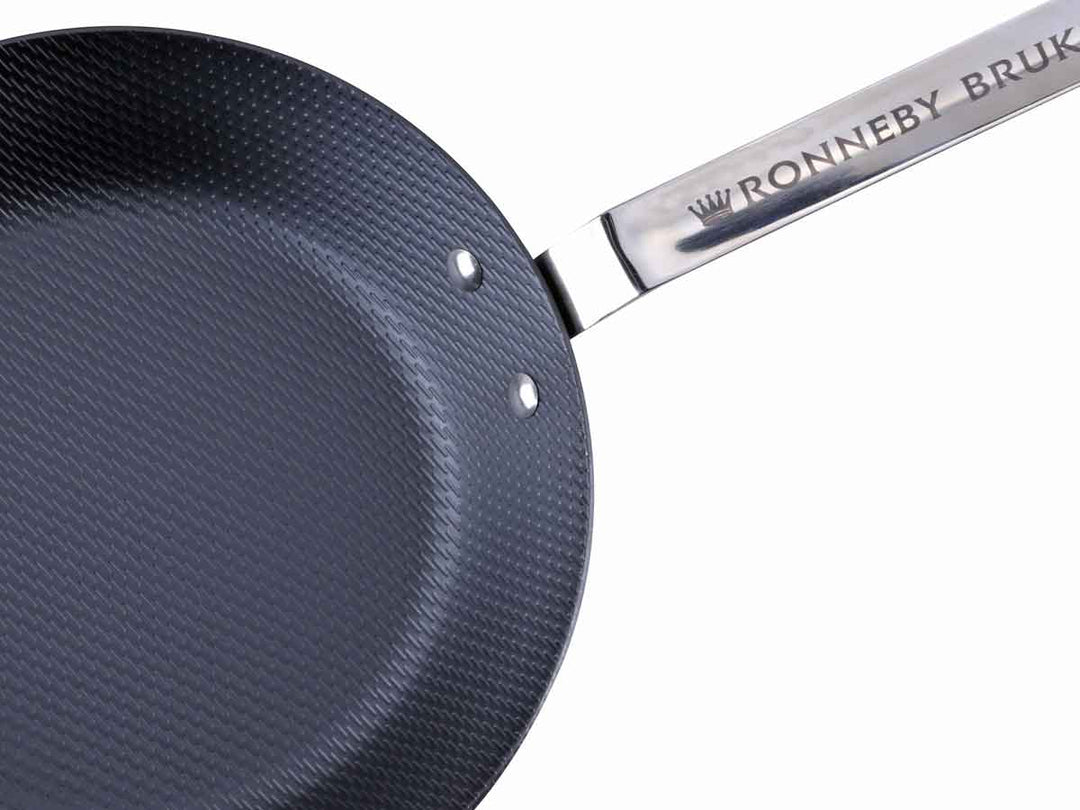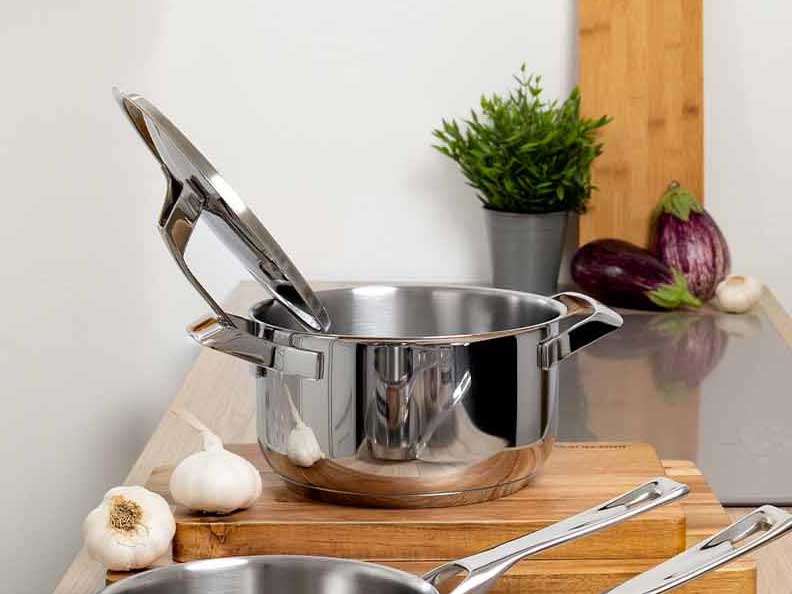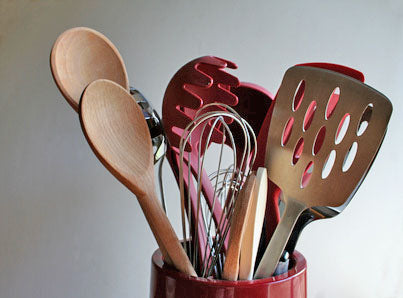Cleaning cutting boards
Observing the rules of good kitchen hygiene is particularly important with cutting boards in order to prevent the transmission of potentially pathogenic germs, such as those that can occur on raw meat, as best as possible.
Because cutting boards are made from a wide variety of materials, cleaning and care recommendations vary. Below is an overview of how to clean
Clean and maintain cutting boards made of wood and bamboo
Wooden cutting boards are kitchen utensils that bring a natural warmth to the kitchen with their often beautiful color and grain. If you follow a few tips, you will be able to enjoy your wooden cutting board for a particularly long time. Incidentally, these instructions for cutting boards made of wood also apply to cutting boards made of bamboo , even if botanically bamboo is a grass.
Wooden cutting boards do not belong in the dishwasher
Please never put your wooden cutting board in the dishwasher! The long-term exposure to hot water causes the wood to swell considerably, and the intensive cleaning agent leaches the wood. As a result, the cutting board can warp, crack, fade and quickly become unsightly.
Wash the wooden cutting board by hand
All you need to clean the cutting board is hot water, some washing-up liquid, a dish brush and a microfiber cloth.
Be sure to only use clean brushes and rags to avoid "rubbing" germs into the wood.
First, run some hot water over the board to wash away coarse dirt. Then put some washing-up liquid on the dishwashing brush and thoroughly clean the entire surface. Finally, go over the board again with the microfiber cloth.
Finally, rinse thoroughly with water to remove any detergent residue.
Do not leave the wooden cutting board in the dishwater
If a wooden chopping board is left in the rinsing water for a long time, something similar to what happens in the dishwasher, the wood swells and leaches out.
Leave the wooden cutting board to dry upright
After rinsing, dry the board well and then leave the board standing upright to dry. The board must be well ventilated all around, so please do not lean any other boards, plates or similar against the drying cutting board. Give the wooden board at least half a day to air dry. Only when the board is completely dry should you store it in the kitchen cupboard. If the cutting board does not dry thoroughly, odors and even mold can form.
Disinfect wooden cutting board
If you want to clean your wooden cutting board thoroughly from time to time, we recommend rubbing the cleaned cutting board with vinegar. Vinegar gently contributes to the disinfection of the wood. Add a dash of vinegar to the surface of the board and spread it with a clean cloth. Leave on for a few minutes, then rinse off thoroughly with clear water and finally dry off.
Oil the wooden cutting board
Wooden cutting boards are usually already oiled in the factory. But with use and cleaning, the board loses its protection over time. It is therefore advisable to oil the wooden cutting board regularly, depending on how often it is used.
The board must be clean and dry for oiling. Then put some oil on the surface and spread it evenly with a lint-free cloth, eg a clean microfiber cloth. Wipe off any excess. Both the top and the bottom as well as the edges should be oiled.
Now let the oiled wooden cutting board rest on a dry, absorbent cloth for at least a day before using it again. Repeat the process for highly absorbent or heavily used wood.
Oiling with cooking oil
In principle, you can use any cooking oil for oiling. However, this has the disadvantage that under certain circumstances it can become rancid more easily and the board then smells unpleasantly.
Of the edible oils, linseed oil is the best, as it partially hardens and does not go rancid so easily. But be careful: rags soaked in linseed oil can catch fire when drying! Store rags soaked in linseed oil in an airtight container, eg in a jar!
Oiling with special cutting board oils
There is a large number of oils on the market that are suitable for cutting boards, some of vegetable origin (e.g. mixtures of linseed oil, waxes and solvents), some of synthetic origin (e.g. paraffin oil / white mineral oil, which is also used in ointments and cosmetics). Observe the manufacturer's application instructions.
Refurbish wooden cutting board
If you own a particularly beautiful wooden cutting board that is already very badly worn, you can try to refurbish it with time and a little manual skill.
The first step is to remove deep cut marks and protruding wood fibers. Use sandpaper and a sanding block to remove the used layer of wood. Start with coarse sandpaper (60 or 80 grit) and then progress to finer sandpaper (240 grit) until a smooth, fine finish is achieved.
Vacuum or brush off dust, then remove dust residue with a clean microfiber cloth or a special tack cloth. Finally, oil the board in at least two passes 24 hours apart.
Clean and care for wood fibre / paper fibre cutting boards
Cutting boards made of wood fiber/paper composite are a bit like a mixture of wooden cutting boards and plastic cutting boards in terms of appearance and properties and consist of wood/paper fibers that are mixed with a resin and pressed.
Wood/paper fiber cutting boards do not absorb moisture, so they are generally very hygienic and they can usually be cleaned in the dishwasher. (Observe manufacturer information!)
If you want to clean the wood fiber/paper fiber cutting board by hand, all you need is hot water, a little washing-up liquid, a dish brush and a microfiber cloth. First run hot water over the board to wash away coarse dirt. Now scrub the plastic cutting board thoroughly with a little washing-up liquid and the washing-up brush. Then go over the cutting board again with the microfiber cloth.
Finally, rinse with plenty of water to remove all detergent residue. Then dry the board thoroughly and leave it standing for a while to air dry. If necessary, store in the cupboard only after it has completely dried.
Caring for wood fiber/paper fiber cutting boards
Cut marks appear on the surface as a result of use. This is normal, since the fibre-resin mixture is softer than the knife edge and protects it as a result. If the cut marks are very numerous or very deep, we recommend rubbing the wood fiber/paper fiber cutting board vigorously with a rough sponge or some steel wool in order to obtain a smooth surface again. Then rinse thoroughly.
Clean and maintain plastic cutting boards
Plastic boards are very easy to clean; hot water, some washing-up liquid, a dish brush and a microfibre cloth are sufficient. First run hot water over the board to wash away coarse dirt. Now scrub the plastic cutting board thoroughly with a little washing-up liquid and the washing-up brush. Then go over the plastic cutting board again with the microfiber cloth.
Finally, rinse with plenty of water to remove all detergent residue. Then dry the board thoroughly and leave it standing for a while to air dry. Only then, if necessary, store it in the cupboard.
From time to time you should disinfect the plastic cutting board if you do not clean it in the dishwasher. Add a dash of vinegar to the surface of the board and spread it with a clean cloth. Leave on for a few minutes, then rinse off thoroughly with clear water and finally dry off.
Cleaning the plastic cutting board in the dishwasher: be careful!
Most plastic cutting boards can also be cleaned in the dishwasher. (Observe the manufacturer's instructions!) It is essential to ensure that the plastic cutting board is standing freely in the machine and that nothing is leaning against the board. Why? The plastic becomes easier to mold under the influence of heat; If a heavy object (e.g. a large plate, pot, casserole dish, etc.) leans against the plastic cutting board during the dishwashing process, the board can become permanently deformed.
Maintaining plastic cutting boards
Plastic cutting boards are very easy to care for and do not need to be oiled. Since the plastic material is much softer than the knife blade, plastic cutting boards protect the blades optimally, but they also wear deep cut marks relatively quickly. Therefore, when cutting, do not press down unnecessarily when you have almost cut through the material to be cut, and do not always cut in the same place on the board; this will reduce the number of deep cut marks.
Raised burrs from cut marks, which can also be felt with a fingernail, can be carefully planed off with a flat knife blade.
If the plastic cutting board shows a lot of cut marks after a long period of use, it should be replaced for optimal hygiene.






